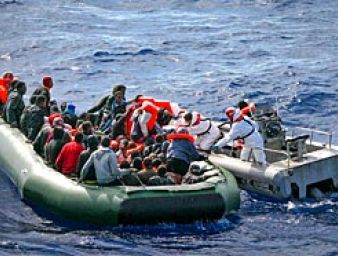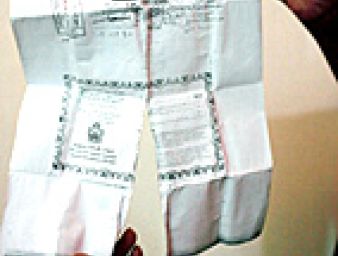Italy’s migrant hotspot centres raise legal questions
02 August 2016

Some 15 men line up, bags with their few belongings slung over their shoulders. Word is given and they troop out of the building in the afternoon heat to board a bus. The next stage of their journey has begun.
But for the rest of the people at the Pozzallo closed registration centre in Sicily, it will most likely be another day of waiting to learn where they will be sent next in the migrant reception system by the Italian authorities.
“We were told by officials that they work very fast to ensure adults are transferred out in 48 hours, but many adults stay for much longer periods than that, and for unaccompanied children it is even more difficult as appropriate places to house them are in short supply,” said Imma Guerras-Delgado, who was part of a UN Human Rights Office monitoring mission to Italy to assess the human rights situation of refugees and migrants.
The Pozzallo centre is one of four so-called “hotspots” in southern Italy, where people rescued at sea are initially held while EU and Italian officials try to establish their age, nationality, identity and their reasons for migrating as part of evaluating what should happen to them.
Some 207 “guests”, as officials referred to the migrants, were at the centre when Guerras-Delgado and seven colleagues from the UN Human Rights Office visited.
Rows of bunk beds and mattresses on the floor took up about half of the large hangar-like building, with no clear division between sleeping areas for men, women and unaccompanied children. A TV high on the wall was on but few people were watching, preferring to rest on their bed or just stand around in groups. Several young Bangladeshi men sat in a circle and started singing and clapping to pass the time.
At Pozzallo, some of the migrants can request day passes so they can go out. By contrast, migrants on the island of Lampedusa are not allowed to leave the hotspot – a compound of several buildings with separate shelters for men, women, girls and boys. Adult migrants spend on average eight days at Lampedusa before being transferred.
The difference in conditions and the lack of a clear legal framework for the operation of the hotspots were raised several times during the UN Human Rights Office’s mission to Italy from 27 June to 1 July.
The UN team heard concerns that the hotspots are currently being operated more as detention centres rather than registration centres. Immigration detention should be imposed only as a measure of last resort, but there are no mechanisms in place to assess the necessity of detaining migrants who arrive. The lack of clarity regarding the length of time migrants can be held and to what degree force can be used should a migrant refuse to be fingerprinted was particularly worrying, the UN team heard from international and national NGOs in Italy.
“Italy is currently not able to ensure equal standards for the protection of human rights across the migrant reception system. This is due to a combination of factors, including the migration policies the EU has imposed on Italy and the Italian government’s contracting out of services without clear rules and regulations,” said Pia Oberoi, the UN Human Rights Office’s Migration Advisor.
Italy, which has seen more than 90,000 people arrive by sea so far this year, increased the number of places it has in the migrant reception system, from some 22,118 available in 2013 to 120,000 by the end of 2015. Although the Ministry of Interior has the main responsibility for organising and coordinating the overall system, the running of the centres is outsourced, including to private businesses and charities. It is then up to those running the centres to decide how and on what they spend the government funds.
“We know that work is under way by the Italian Ministry of Interior and its international partners to improve and harmonise the way the hotspots are run. We think this is a good step. What we would urge is greater co-operation and agreements with UN agencies and civil society to provide additional medical and psycho-social services and recreational activities, and to allow them to monitor the hotspots to ensure greater emphasis on protection of the rights of migrants, including children,” Oberoi said.
At Pozzallo, a 16-year-old girl from Nigeria, was keeping herself occupied by doing a boy’s hair, wielding a plastic fork as a comb and expertly braiding his locks. The boy, also 16 and from Guinea, did his best not to cry in pain as she tugged his hair. Neither was much in the mood for talking.
The UN team was preparing to leave Pozzallo when a young man approached Guerras-Delgado to ask if she would give him her watch.
“I didn’t understand why he wanted it, it’s so cheap. Only later did I realise. There is no clock there, despite the efforts of a colleague from the UN Refugee Agency. So it’s hard for people to know the time, which must hang heavy,” said Guerras-Delgado. “I wish now I had given him my watch.”
This is the third article in a four-part series about the mission to Italy by UN Human Rights Office team from 27 June to 1 July. Read the other stories here:
- Security at forefront as Italian island receives migrants
- Migrants cling to their dreams as they await uncertain future
- Child migrants’ future in Italy “must not depend on luck”
2 August 2016



